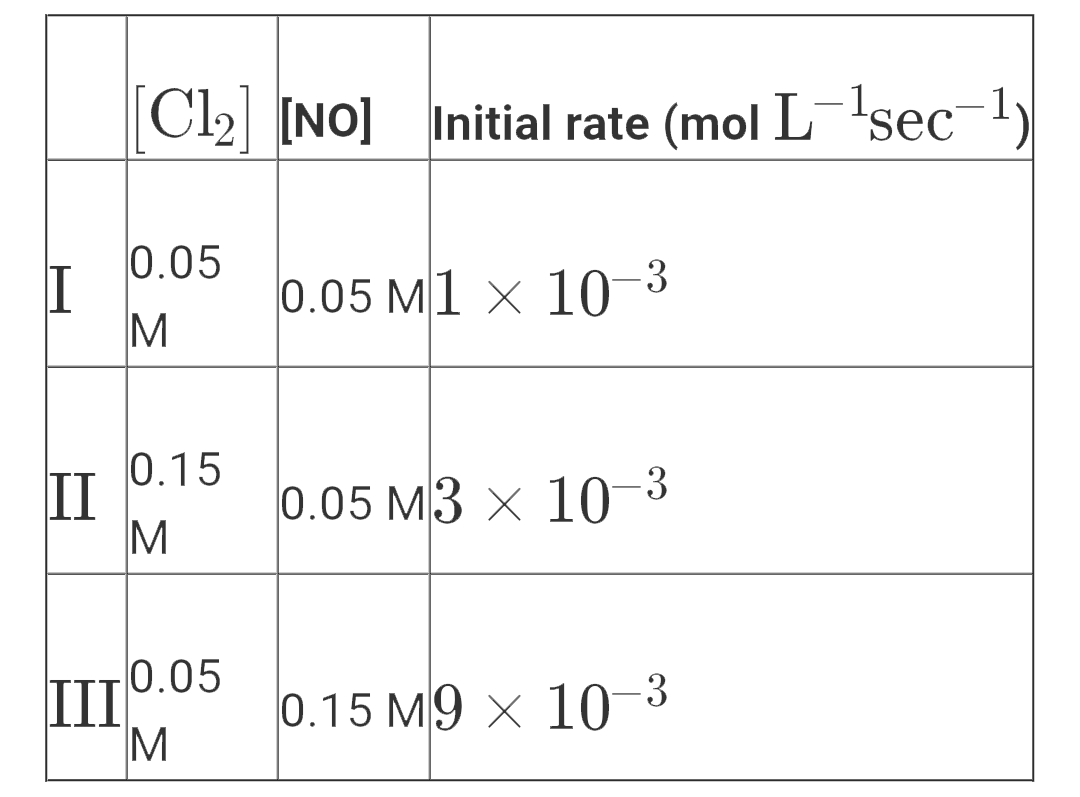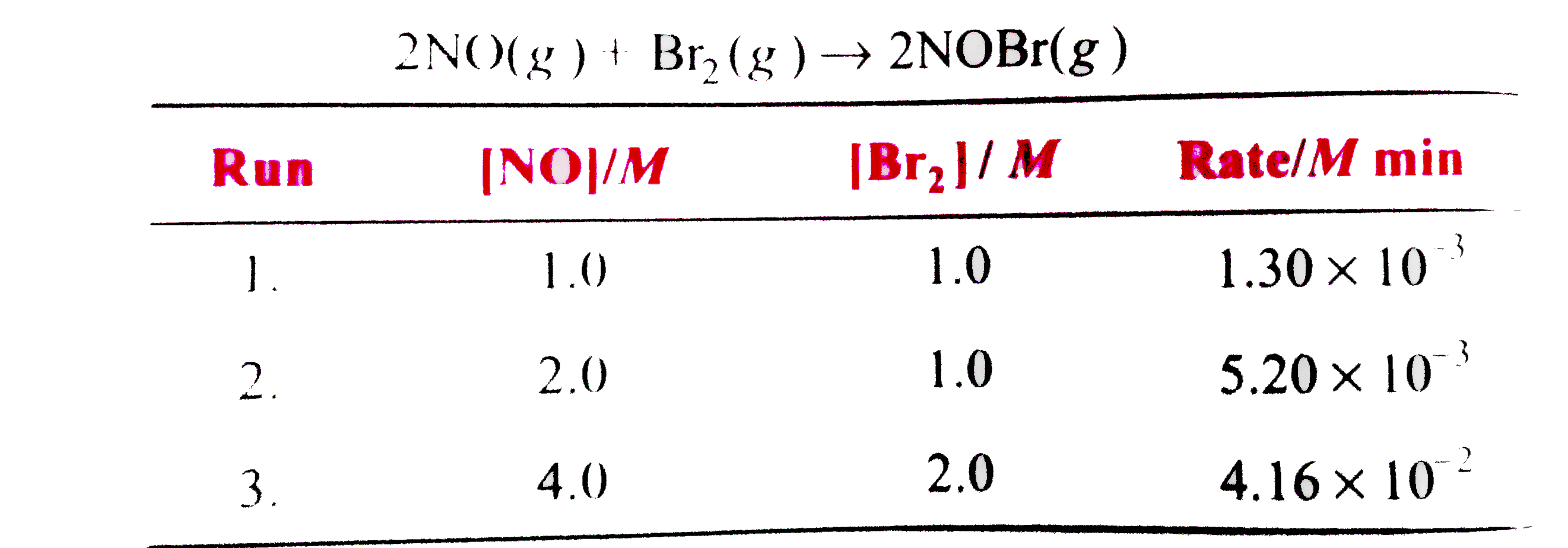The following experimental data were collected for the reaction:
Cl2(g)+2NO(g)→2NOCl(g)

Construct the rate equation for the reaction.
Let x be the order wrt Cl2 and y wrt NO2.
Rate =k[Cl2]x[NO]y
From experiments (1) and (2)
1.2×10−4=k[0.010]x[0.010]y …(1)
10.8×10−4=k[0.010]x[0.030]y ...(2)
Dividing (2) by (1), we get
9=[0.030]y[0.010]yor(3)2=[3]y
or y=2
From experiments 2 and 3, we have
10.8×10−4=k[0.010]x[0.030]y ...(3)
21.6×10−4=k[0.020]x[0.030]y ...(4)
Dividing (4) by (3), we get
2=[0.020]x[0.010]xor21=2xorx=1
Rate =k[Cl2][NO2]2
Topper's Solved these Questions
- BOOK - U-LIKE SERIESCHAPTER - CHEMICAL KINETICS EXERCISE - LONG ANSWER QUESTIONS-I26videos
CHEMICAL KINETICS
- BOOK - U-LIKE SERIESCHAPTER - CHEMICAL KINETICS EXERCISE - LONG ANSWER QUESTIONS-II13videos
CHEMICAL KINETICS
- BOOK - U-LIKE SERIESCHAPTER - CHEMICAL KINETICS EXERCISE - VERY SHORT ANSWER QUESTIONS47videos
CHEMICAL KINETICS
- BOOK - U-LIKE SERIESCHAPTER - CBSE EXAMINATION PAPER 2020 (CODE No.56/4/1) EXERCISE - SECTION -D3videos
CBSE EXAMINATION PAPER 2020 (CODE No.56/4/1)
- BOOK - U-LIKE SERIESCHAPTER - CHEMISTRY IN EVERYDAY LIFEEXERCISE - LONG ANSWER QUESTIONS - I21videos
CHEMISTRY IN EVERYDAY LIFE
Similar Questions
Knowledge Check
- Question 1 - Select One
For the reaction : Cl2(g)→2Clg
AΔH is positive, ΔS is positive.BΔH is postive, ΔS is negative.CΔH is negative, ΔS is negativeDΔH is negative, ΔS is positive - Question 2 - Select One
The given data are for the reaction, 2NO(g)+Cl(g)→2NOCl(g) at 298K

The rate law of the reactions isArate =k[NO][Cl2]Brate =k[Cl2][NO]2Crate =k[Cl2]2[NO]Drate =k[Cl2] - Question 3 - Select One
For the equilibrium
2NO(g)+Cl2(g)↔2NOCl(g)
Kp is related to Kc by the reaction:AKp=Kc(RT)BKp=Kc(RT)2CKp=KcRTDKp=Kc(RT)2
Given statement true or not? For the reaction : 2NOCl(g)⇔2NO(g)+Cl2(g),Kp=Kc.
View SolutionThe reaction : 2N2O5(g)→2NO2(g)+(O2)g
was studied and the following data were collected.

Determine: (i) the order, (ii) the rate law and (iii) rate constant for the reaction.View SolutionFor a reaction, Cl2(g)+2NO(g)→2NOCl(g) ,the rate law is expressed as rate = k[Cl2][NO]2. What is the order of the reaction?
View SolutionDetermine the value of equilibrium constant for this reaction : 2NOCl(g)+O2(g)⇔2NO2(g)+Cl2(g) from the Kp values for these reactions.
2NOCl(g)⇔2NO(g)+Cl2(g)KP1=1.7×10−22NO2(g)⇔2NO(g)+O2(g)KP2=5.9×10−5View SolutionEquilibrium constant for the reaction, 2NOg+Cl2(g)⇔2NOClg is correctly given by the expression
View Solution


